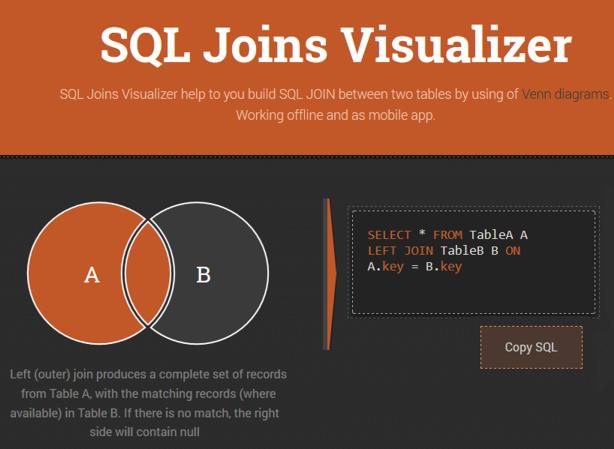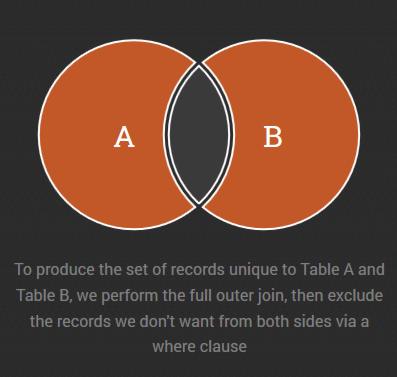| SQL Joins Visualizer |
| Written by Kay Ewbank | |||
| Thursday, 08 January 2015 | |||
|
If you’re learning SQL (or teaching someone else), working out which Join you need can be confusing. A newly released open source utility provides both explanations and code.
SQL Joins Visualizer is an open source app that lets you click on sectors in a Venn diagram to choose how the tables should be combined. ANSI-standard SQL specifies five types of JOIN: INNER, LEFT OUTER, RIGHT OUTER, FULL OUTER and CROSS. You can also create a self-join to join a table to itself. When you’ve clicked on the segments, the SQL Joins Visualizer shows you the SQL that corresponds to your selection, and you can copy and paste it if you need the SQL code elsewhere. The app also gives you a description of the join you’ve created. So, for example, if you click on the right-hand segment and the central segment, you get a description telling you that a “Right (outer) join produces a complete set of records from Table B, with the matching records (where available) in Table A. If there is no match, the left side will contain null”. You also get the SQL:
This is a very simple app, but it would be a good teaching aid. It is available online, and will also work offline
You can read more about the app and SQL joins in general in a post on the Leopard blog from the app’s author, Alexey Vasiliev.
More InformationRelated Articles
|
Google Launches Colab Extension For Visual Studio 02/12/2025 Google has launched a new Google Colab extension for Visual Studio Code. Colab is Google's platform for AI/ML development. |
WeatherNext2 From Google DeepMind 23/11/2025 Google is now providing users of Google Search, Gemini and Pixel Weather faster, more accurate and higher resolution weather forecasts thanks to WeatherNext 2, a forecasting model based on a [ ... ] |
More News
|
Comments
or email your comment to: comments@i-programmer.info



